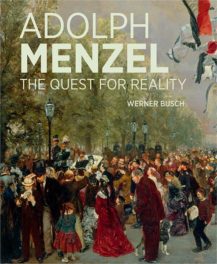We’ve asked members of the Getty community to share short, personal reflections on works of art they’re thinking about right now. These recordings feature stories related to our daily lives.
This week, curatorial research assistant Alex Jones is reminded of his grandmother by a photograph of a Black woman at a 1965 civil rights protest. To learn more about this work, visit: http://blogs.getty.edu/iris/an-activists-view-of-the-civil-rights-movement/.

CORE protest at the Los Angeles Federal Building (woman being dragged), 1965, Charles Brittin. Getty Research Institute, Los Angeles (2005.M.11)
Listen to the full series of short reflections here.
Transcript


JAMES CUNO: Hi, I’m Jim Cuno, president of the J. Paul Getty Trust. We’ve asked members of the Getty community to share short, personal reflections on works of art they’re thinking about right now. This week Alex Jones discusses a photograph by Charles Brittin.
ALEX JONES: Hello, my name is Alex Jones. I am a curatorial research assistant in modern and contemporary collections at the Getty Research Institute.
As part of my work with the GRI’s African American Art History Initiative, I research historical and visual representations of Black experience within our special collections. When COVID first hit, just weeks before thousands across the US marched to demand racial justice, I encountered this 1965 image by the photographer Charles Brittin.
This is an unsettling image, to say the least. A young black woman in simple yet elegant attire is dragged by several white men across a city sidewalk. Her clothes highlight the woman’s youthful charm: a plaid skirt and blouse draped by a chic shearling jacket, punctuated by the stylish flair of white heels. Instead of showing faces, though, the image focuses on hands, and limbs, and entangled bodies. The white men’s hands firmly grip the woman’s bicep and wrist, which lead downward to her limp and contorted figure as her head falls back behind her. In the end, it is an exquisite shot of the exceptional violence that Black women regularly face in confrontations with police.
I don’t know who this woman is—her name is not mentioned in the official record—but her struggle here underscores the critical role that Black women play in the Civil Rights Movement. In this case, on March 11th, 1965, thousands gathered at the steps of the Federal Building in one of the largest protests in Los Angeles history. The events of Bloody Sunday in Selma, Alabama, just days before, sent shockwaves through the US, igniting powerful responses from Americans in cities and towns across the country. In Los Angeles, local activists—many of them Black women and men—took to the streets to demand justice in their own city.
At first when I saw this picture, I thought of my grandmother—had she witnessed or endured a similar situation as a younger woman? In the late 1950s as a college student, she and her peers at the Atlanta University Center organized some of the city’s first Civil Rights and anti-segregation actions, often coming toe-to-toe with local police.
This woman in the photograph reminds me of the Spelman women in my grandmother’s yearbooks—young black women from around the US who spent their early adulthood fighting for racial equality.
Like many young Black Americans today, I envision or imagine the Civil Rights Movement through alternating images of heroics and horror; of Black people who dared to lay their lives on the line for far-belated justice and white police officers and civilians who seemed intent on denying that future.
Brittin’s photograph returns me to these histories—and my connection to them through my grandmother—giving me a renewed perspective. But it also leaves me somewhat ambivalent. Though Brittin’s photograph documents the endurance of Black Americans in the struggle for justice, the long and continuous movements for Civil Rights that persist to this day remind me that the sacrifices embodied by this woman, my grandmother, and countless others have yet been reciprocated. Instead, we continue to fight against the inequality that their protest and their bodies laid bare.
CUNO: To view Charles Brittin’s 1965 photographs of the CORE protest at the Los Angeles Federal Building, click the link in this episode’s description or look for it on blogs.getty.edu/iris.
JAMES CUNO: Hi, I’m Jim Cuno, president of the J. Paul Getty Trust. We’ve asked members of the Getty community to share short, personal reflections on works of art they’re thinking about right now. This week Alex Jones discusses a photograph by Charles Brittin.
ALEX JONES: Hello, my n...

See all posts in this series »








I am so moved by your photos! Just amazing. Responding specifically to Britten’s photo of a young woman being dragged by her forearms in a 1965 (?) photo, I was initially so revulsed by the Violence. The use of unnecessary force … which immediately brought me back to 2020. We haven’t really changed much, have we?